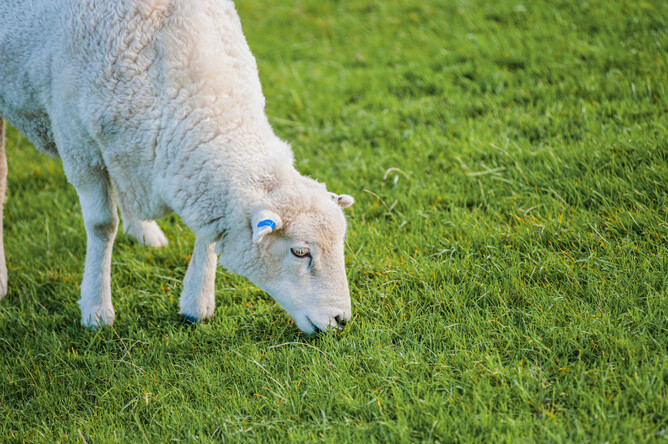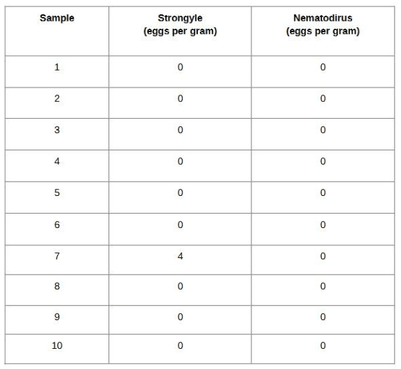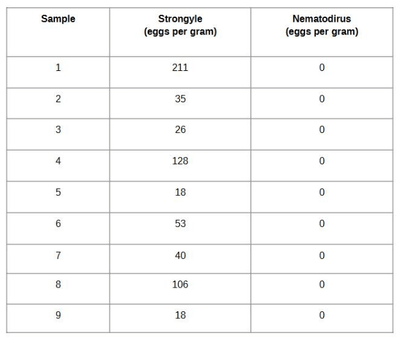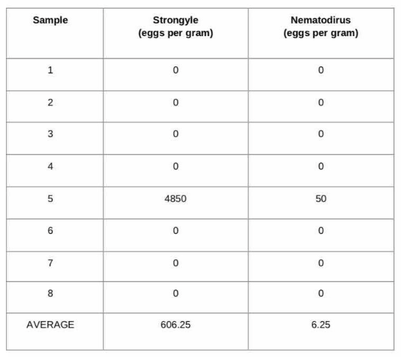At this time of year, with weather still warm and plenty of moisture around, conditions are ideal for parasite growth.
We provide quick in-house faecal egg count (FEC) testing. Faecal samples can be dropped off to any VetSouth clinic to be analysed by our ParaSight machines in Winton, Gore and Tapanui.
Two of the main FECs we run are:
Post-Drench Checks – a FEC given around ten days after use of an oral drench.
Drench Interval Checks – a FEC given 28 days after the last oral drench.
Post-Drench Checks: The routine drench check
This FEC is for checking in on your choice of oral drench. 10 faecal samples are required. It’s ideal to bring these samples in 10 days after drenching. If your drench is working, you should expect to see zero eggs at this point, as the graph below shows.
The ParaSight machine is very accurate, counting down to four eggs per gram, rather than the less accurate 50 eggs per gram offered previously.
Drench Interval Checks: The pre-drenching check
We recommend this FEC for checking to see if drenching is required. It can be done at any time of year. Usually samples are brought in 28 days after the last drench. It also requires 10 faecal samples.
For example, a great use of this quick FEC would be if your animals haven't had an oral drench in over four weeks and you’d like to assess the worm burden of the flock before deciding whether to drench or not. You may find that only your bottom cut needs treatment, rather than the entire mob, or that no drenching is needed at all.
With a drench interval check, we'd expect results like those shown in the graph below. In these samples we can see some worm burden present, but with low numbers like this we generally wouldn’t recommend drenching – saving you money on drenching and helping prevent resistance!
Individual vs. pool samples for FECs
In clinic, we do have the ability to test individual faecal samples or composite faecal samples. However, our preference is individual samples, especially for these sorts of drench check FECs.
The graph below shows exactly why we prefer 10 individual samples over one composite sample. If this had been a pooled sample, the results would have indicated a non-performing drench. But the individual results allow us to see that only one lamb was potentially missed or spat out the otherwise effective drench!
Use FECs to test your drench effectiveness, so you can target the appropriate treatment (product and timing) and make the most of your animal health spend.




